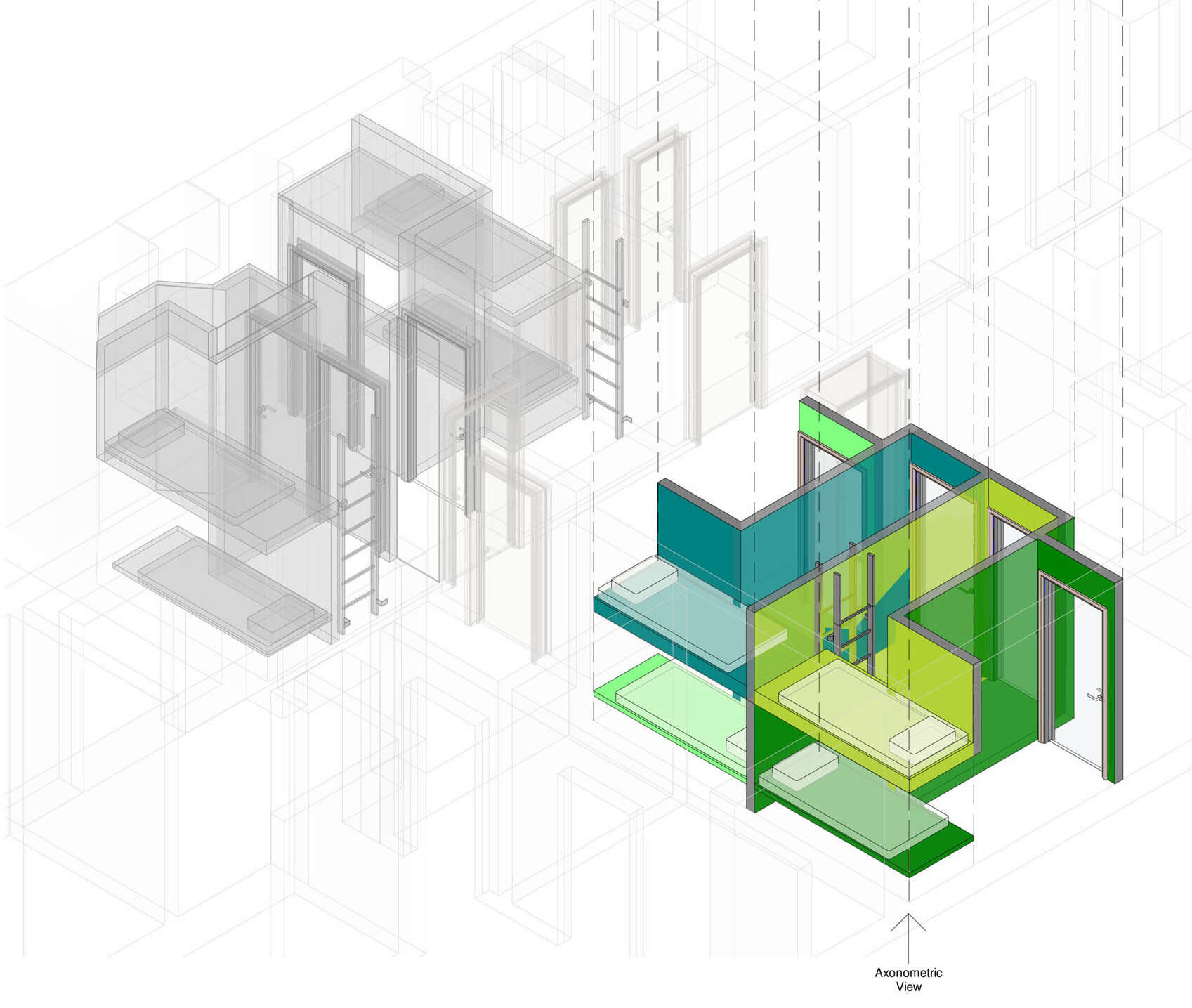Homeless Sleep Pod Accommodation
Hamoaze House is a drug and alcohol rehabilitation centre opening their doors to the growing homeless population in Plymouth. In recent years, during the winter, they have given over two spare rooms to accommodate 13 rough sleepers. However, due to the Covid19 pandemic these spaces do not function within the social distancing guidelines. Our brief was to provide some partitions and subdivisions within these two rooms to create separate spaces for the sleepers.
The main constraints of the existing building were the number of windows available to give inhabitants access to natural light and ventilation, along with the small budget provided from the government grant the charity had received. Each sleeper space would also need its own access to ensure users safety.
It was important that each sleeper was given access to light and with the considerations of Covid19, ventilation was key. Playing around with the simple idea of partitions and subdivisions could provide space for 4 or 5 beds. However, by challenging the initial brief and increasing the design complexity, we were able to double the original proposed numbers and create a bunked sleeper pod design which accommodates 8 sleepers. Although more complex then originally intended the design remained within the tight budget.
Using wall partitions and considering varying levels, the simplistic arrangement of bunked beds informed the design and interlocking arrangement of these sleeper pods.
Each space is separate with either glazed doors or a vision panel to allow access to the natural light, effectively creating a room within a room. In some pods, there is access to natural ventilation through existing windows, where this is not possible, we provided a mechanical ventilation system. Each room has a power supply, a heater and storage space for any baggage. The pods are used between late evening and early morning, and offers a temporary accommodation which exceeds the current layout of dorm style camp beds, still keeping a high number of occupants in the small spaces available.
The sleeper were completed in mid-January and occupied immediately.

